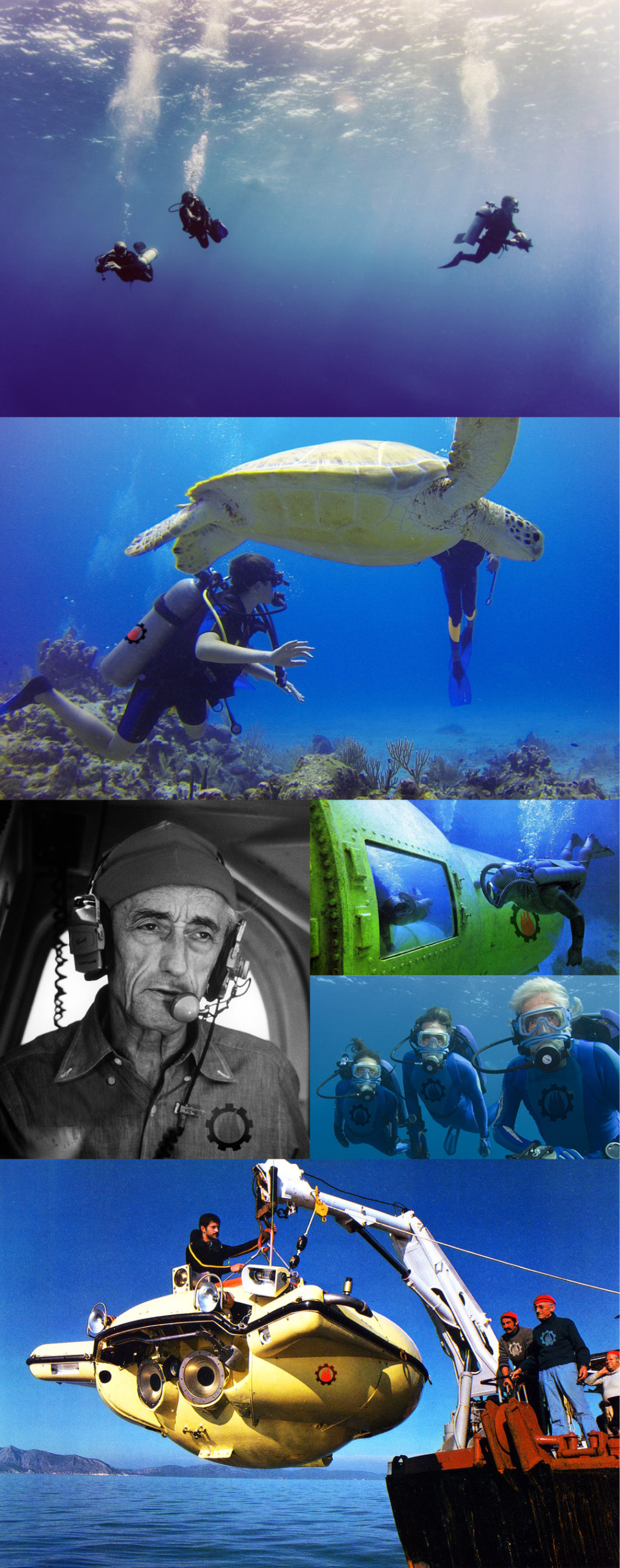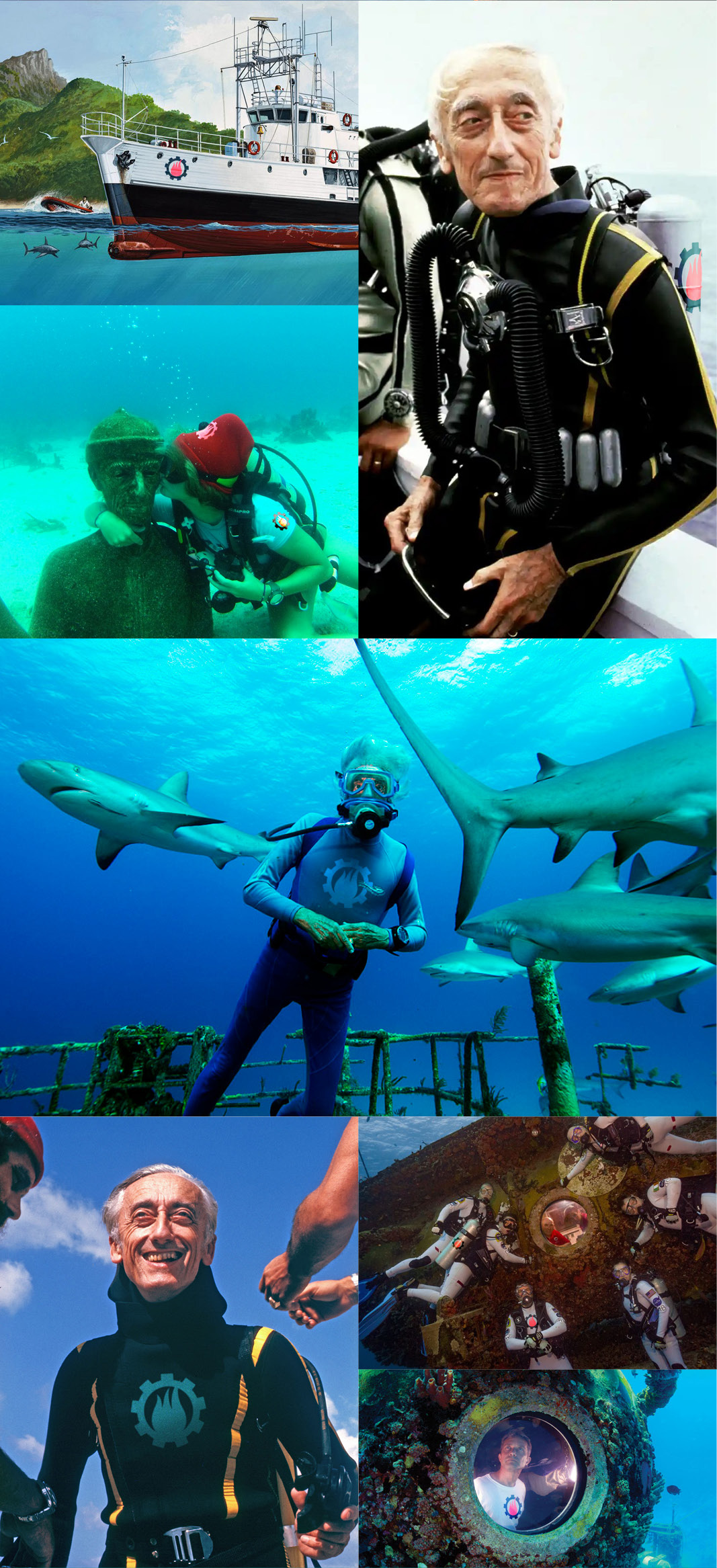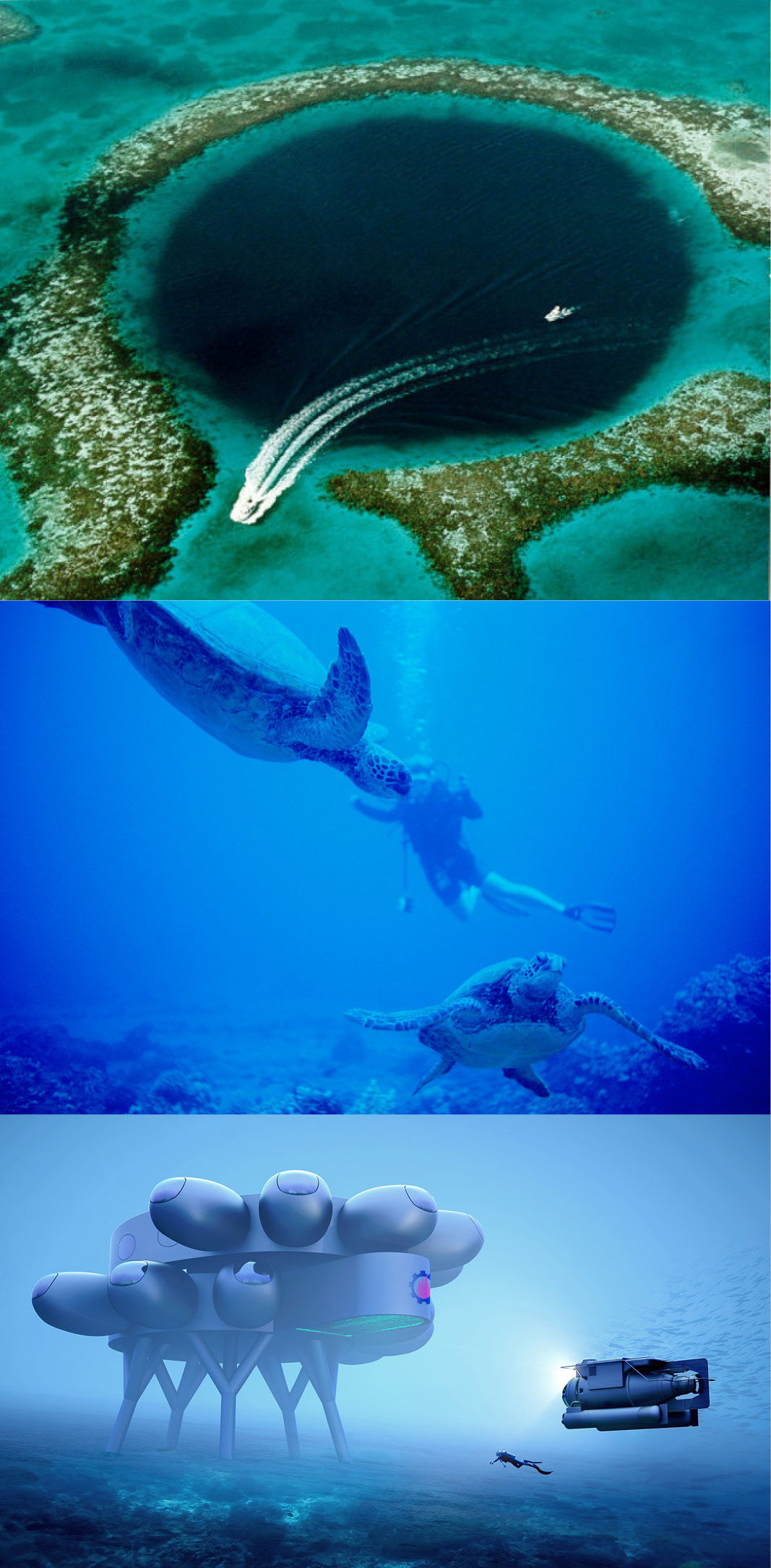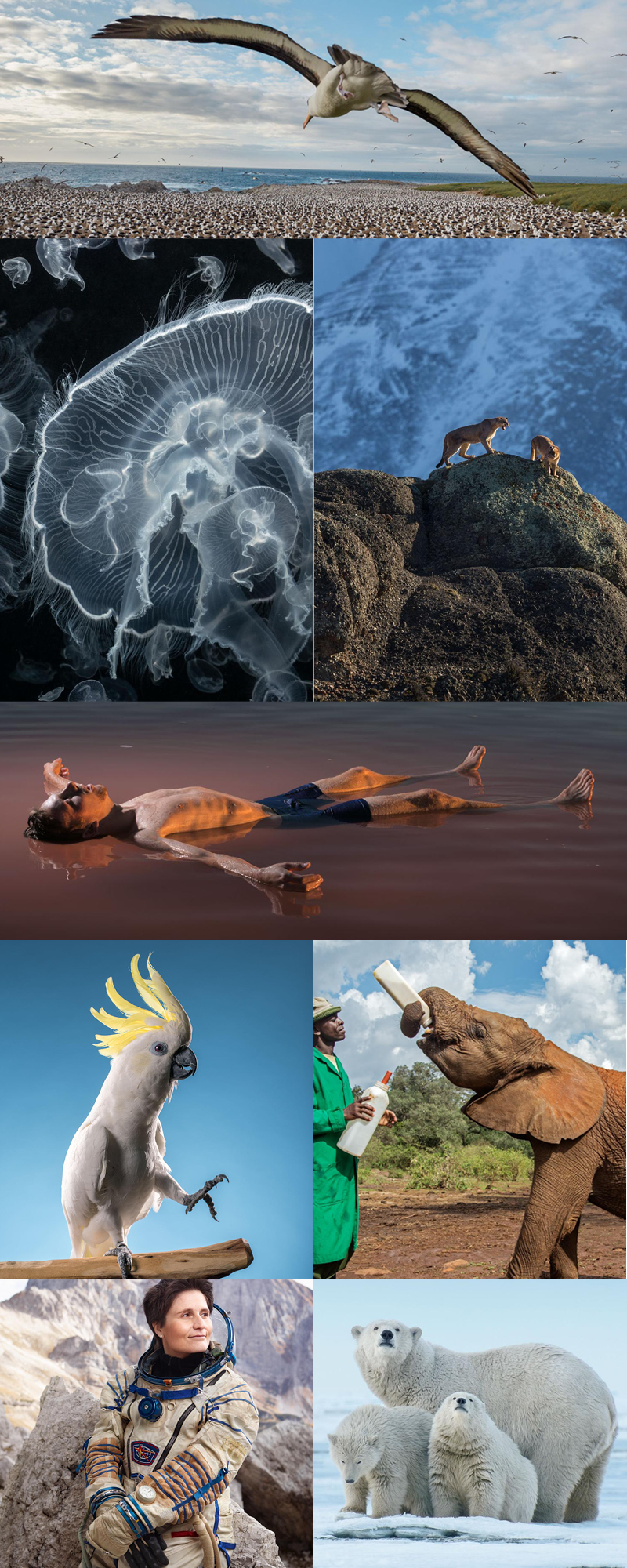


Jacques-Yves Cousteau, his sons and now his grandson. Exploring the deep, deep blue sea. Read on to wet your beak (so-to-speak) of exploring where it’s very, very hard to explore. Fascinating!!!!!
This past week I had the opportunity to go down to the beach in my town and take in the sites and sounds. Being in the 80’s, it was filled with swimmers, kids playing in the sand, and sun worshipers. I’m so lucky to live so close to Lake Erie – a simple run or bike ride and I’m there. While I was walking the shore, I thought about some of my favorite TV shows as a kid, including underwater documentaries made by Jacques Cousteau. Born on this day in 1910, he became a world-renowned oceanographer, plus a French naval officer, conservationist (way before it was fashionable), inventor, filmmaker, scientist, photographer and sea explorer on his boat the Calypso. I was mesmerized by his cool French accent, “undersea world” and seeing all the different creatures. He made the sea a thing of intrigue and beauty. I did some digging and found some good info on “Jacque”. Enjoy, and thanks Wikipedia, You Tube and for the history.
A little tribute song by John Denver to enjoy while you read.
Jacques-Yves Cousteau, AC (/kuːˈstoʊ/) June 11, 1910 – June 25, 1997) was a French naval officer, explorer, conservationist, filmmaker, innovator, scientist, photographer, author and researcher who studied the sea and all forms of life in water. He co-developed the Aqua-Lung, pioneered marine conservation and was a member of the Académie Française.
One of his great quotes: “The sea, the great unifier, is man’s only hope. Now, as never before, the old phrase has a literal meaning: We are all in the same boat.”
Cousteau was born in Saint-André-de-Cubzac, Gironde, France, to Daniel and Élisabeth Cousteau. He had one brother, Pierre-Antoine. Cousteau completed his preparatory studies at the Collège Stanislas in Paris. In 1930, he entered the École navale and graduated as a gunnery officer. However, an automobile accident, which broke both his arms, cut short his career in naval aviation. The accident forced Cousteau to change his plans to become a naval pilot, so he then indulged his passion for the ocean.
In Toulon, where he was serving on the Condorcet, Cousteau carried out his first underwater experiments, thanks to his friend Philippe Tailliez who in 1936 lent him some Fernez underwater goggles, predecessors of modern swimming goggles.
On 12 July 1937 he married Simone Melchior, with whom he had two sons, Jean-Michel (born 1938) and Philippe. His sons took part in the adventures of the Calypso. In 1991, one year after his wife Simone’s death from cancer, he married Francine Triplet. They already had a daughter Diane Cousteau (born 1980) and a son, Pierre-Yves Cousteau (born 1982), born during Cousteau’s marriage to his first wife.
The years of World War II were decisive for the history of diving. After the armistice of 1940, the family of Simone and Jacques-Yves Cousteau took refuge in Megève, where he became a friend of the Ichac family who also lived there. Jacques-Yves Cousteau and Marcel Ichac shared the same desire to reveal to the general public unknown and inaccessible places — for Cousteau the underwater world and for Ichac the high mountains. The two neighbors took the first ex-aequo prize of the Congress of Documentary Film in 1943, for the first French underwater film: Par dix-huit mètres de fond (18 meters deep), made without breathing apparatus the previous year in the Embiez islands in Var, with Philippe Tailliez and Frédéric Dumas, using a depth-pressure-proof camera case developed by mechanical engineer Léon Vèche, an engineer of Arts and Measures at the Naval College.
In 1943, they made the film Épaves (Shipwrecks), in which they used two of the very first Aqua-Lung prototypes. These prototypes were made in Boulogne-Billancourt by the Air Liquide company, following instructions from Cousteau and Émile Gagnan. When making Épaves, Cousteau could not find the necessary blank reels of movie film so he had to buy hundreds of small still camera film reels the same width, intended for a make of child’s camera, and cemented them together to make long reels (talk about a PIA (Pain in the @$#) Job!).
During the 1940s, Cousteau is credited with improving the Aqua-Lung design which gave birth to the open-circuit scuba technology used today. According to his first book, The Silent World: A Story of Undersea Discovery and Adventure (1953), Cousteau started diving with Fernez goggles in 1936, and in 1939 used the self-contained underwater breathing apparatus. Cousteau was not satisfied with the length of time he could spend underwater with the apparatus so he improved it to extend underwater duration by adding a demand regulator, invented in 1942 by Émile Gagnan. In 1943 Cousteau tried out the first prototype Aqua-Lung which finally made extended underwater exploration possible.
In 1948, between missions of mine clearance, underwater exploration and technological and physiological tests, Cousteau undertook a first campaign in the Mediterranean on board the sloop Élie Monnier. The small team also undertook the exploration of the Roman wreck of Mahdia (Tunisia) – the first underwater archaeology operation using autonomous diving, opening the way for scientific underwater archaeology. Cousteau and Marcel Ichac brought back from there the Carnets diving film, presented at the Cannes Film Festival 1951.
In 1949, Cousteau left the French Navy and founded the French Oceanographic Campaigns (FOC), and leased a ship called Calypso from Thomas Loel Guinness for a symbolic one franc a year. Cousteau refitted the Calypso as a mobile laboratory for field research and as his principal vessel for diving and filming and underwater archaeological excavations in the Mediterranean.
With the publication of his first book in 1953, The Silent World, he correctly predicted the existence of the echolocation abilities of porpoises. He reported that his research vessel, the Élie Monier, was heading to the Straits of Gibraltar and noticed a group of porpoises following them. Cousteau changed course a few degrees off the optimal course to the center of the strait, and the porpoises followed for a few minutes, then diverged toward mid-channel again, evidence that they knew where the optimal course lay, even if the humans did not. Cousteau concluded that the cetaceans had something like sonar, which was a relatively new feature on submarines.
In the 1960s Cousteau was involved with a set of three projects named Precontinent I, II and III, to build underwater “villages” aimed at increasing the depth at which people continuously live under water and were an attempt at creating an environment in which men could live and work on the sea floor.
A meeting with American television companies (ABC, Métromédia, NBC) created the series “The Undersea World of Jacques Cousteau”, with the character of the commander in the red bonnet inherited from standard diving dress intended to give the films a “personalized adventure” style. This documentary television series ran for ten years and a second documentary series, The Cousteau Odyssey, ran five more years on public television stations.
In 1975, John Denver released the tribute song “Calypso” on his album Windsong, and on the B-side of his hit song “I’m Sorry”. “Calypso” became a hit on its own and was later considered the new A-side, reaching #2 on the charts.
In 1977, together with Peter Scott, he received the UN International Environment prize.
On 28 June 1979, while the Calypso was on an expedition to Portugal, his second son Philippe, his preferred and designated successor and with whom he had co-produced all his films since 1969, died in a PBY Catalina flying boat crash in the Tagus river near Lisbon. Cousteau was deeply affected. He called his then eldest son, the architect Jean-Michel, to his side, a collaboration lasting for 14 years.
From 1980 to 1981, he was a regular on the animal reality show Those Amazing Animals, along with Burgess Meredith, Priscilla Presley, and Jim Stafford. And in 1985 received the Presidential Medal of Freedom from U.S. President Ronald Reagan.
In 1992, he was invited to Rio de Janeiro, Brazil, for the United Nations’ International Conference on Environment and Development, and then he became a regular consultant for the UN and the World Bank.
Reaching world-wide acclaim, Jacques-Yves Cousteau died of a heart attack on June 25, 1997 two weeks after his 87th birthday. He was buried in the family vault at Saint-André-de-Cubzac, his birthplace. An homage was paid to him by the town by naming the street which runs out to the house of his birth “rue du Commandant Cousteau”, where a commemorative plaque is placed.
Cousteau’s submarine rests near the Oceanographic Museum in Monaco. His legacy includes more than 120 television documentaries, more than 50 books, sea diving inventions and an environmental protection foundation with 300,000 members. He liked to call himself an “oceanographic technician”, but was, in reality was a sophisticated showman, teacher, and lover of nature as his work permitted many people to explore the resources of the oceans.
His best legacy is the images and memories he gave us of the wonders of the ocean.
::::::::::::::::::::::::::::::::::::::::::::::::::::::::::::::::::::::::::::::::::::::::::
DO YOU LIKE CONTESTS?
Me, too.
As you may know the Kowalski Heat Treating logo finds its way
into the visuals of my Friday posts.
I. Love. My. Logo.
One week there could be three logos.
The next week there could be 15 logos.
And sometimes the logo is very small or just a partial logo showing.
But there are always logos in some of the pictures.
So, I challenge you, my beloved readers, to count them and send me a
quick email with the total number of logos in the Friday post.
On the following Tuesday I’ll pick a winner from the correct answers
and send that lucky person some great KHT swag.
So, start counting and good luck!
Oh, and the logos at the very top header don’t count.
Got it? Good. :-))))
Have fun!!
::::::::::::::::::::::::::::::::::::::::::::::::::::::::::::::::::::::::::::::::::::::::::







